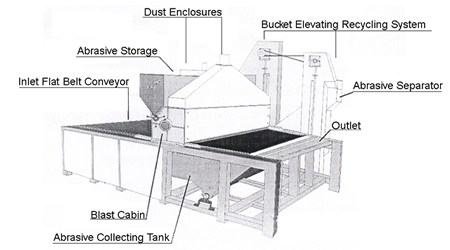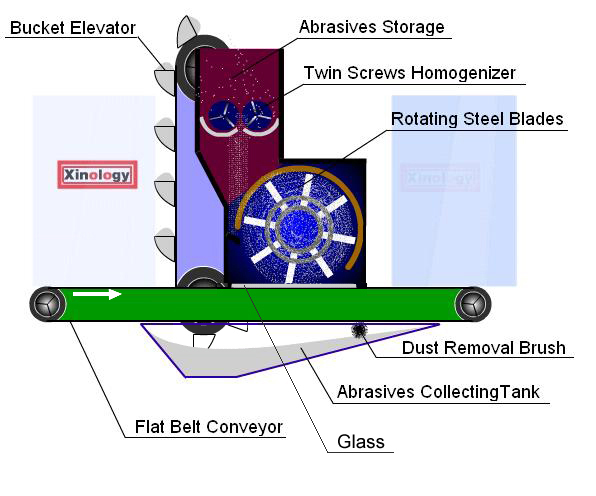Features & Specs
Horizontal Glass Sandblasting Machine
| Models | SBM-H-A
 |
SBM-H-B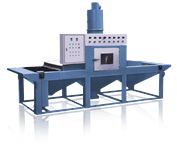 |
SBM-H-C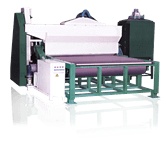 |
SBM-H-D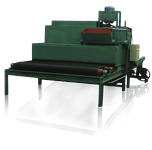 |
| Blasting Process | Air Blasting | Air Blasting | Air Free Rotating Steel Blades | Air Free Rotating Disc Abrasive with Water |
| Dust Separating Process | Cyclone | Bags Filter | Bags Filter | N/A |
SBM-H-C
Highlights
Revolutionary Blasting Process By Airless High Speed Rotating Blades
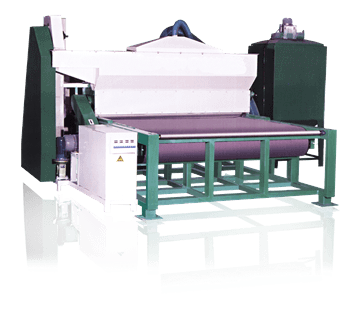
- SBM-H-C glass sandblasting machines automatically produces sandblast glass horizontally
- Airless blasting process free of compress air
- No blast guns and blast nozzles are required
- Abrasive blasting by revolutionary high speed rotating flat steel blades
- Flat steel blades rotates & accelerate abrasives impacting on glass at high velocity
- Twin screws homogenizer provides uniform abrasive density when abrasives fall down to blast cabin
- Bucket elevator lifts up & recycle abrasive minimizing operating cost
- Easy loading of abrasive in tank under flat belt conveyor
- Fine adjustable abrasive amount
- Flat Belt conveyor adjusted with infinite speed regulator
- Environmental friendly dust collection system provides dust free working area
- Low noise pollution
- No investment in air compressor system
Principle
Rotating blades are the core heart of SBM-H-C automatic sandblasting machine. This innovative process is completely free of compress air. Instead of vacuum in traditional air blasting process, abrasives are accelerated by rotating flat blades. When rotating blades get in touch with abrasive physically, the blades heavily hit abrasives which then gains enormous energy. This energy is transformed to momentum energy. Due to its light weight, abrasive travels at ultra high velocity downwards impacting on glass surface. Fine blasted surface is then obtained with this revolutionary airless blasting process.
Description
Specifications
| Models | SBM-H-B-1200 | SBM-H-B-1600 | SBM-H-B-2000 | SBM-H-B-2200 | SBM-H-B-2500 | ||||
| Max. Sandblast Width (mm) | 1200 | 1600 | 2000 | 2200 | 2500 | ||||
| Glass Thickness (mm) | 2 ~ 25 | ||||||||
| Glass Travel Speed (m/min.) | 0 ~ 0.45 | ||||||||
| Principle | Air free rotating steel blades | ||||||||
| Virgin Abrasives Re-Filling | Manually loaded in abrasives tank under belt conveyor | ||||||||
| Dust Separation | Bags filtration | ||||||||
| Re-Usable Abrasives Collection | Automatically collected in abrasives tank under belt conveyor | ||||||||
| Re-Usable Abrasives Recycling | Automatic | ||||||||
| Dust Disposal | Automatically collected in dust collection box | ||||||||
| Abrasives Grit | #36 ~ #46 | ||||||||
| Compress Air | Nil | ||||||||
| Voltage | 380V / 3 Phase / 50 Hz (others on request) | ||||||||
| Power (kW) | 3.2 | 3.7 | 3.9 | 4 | 4.2 | ||||
| Weight (kg) | 820 | 1300 | 1700 | 1900 | 2200 | ||||
| Outer Dimensions (L x H x W) (mm) | 2700 x 1900 x 2200 | 3200 x 1900 x 2600 | 3740 x 1900 x 3000 | 4000 x 1900 x 3200 | 4300 x 1900 x 3500 | ||||
